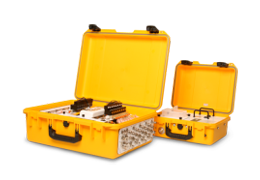The survey chambers (8100-102 10 cm and 8100-103 20 cm) are used to make rapid measurements of soil gas flux that can be repeated over a number of locations, providing data to describe spatial variability.
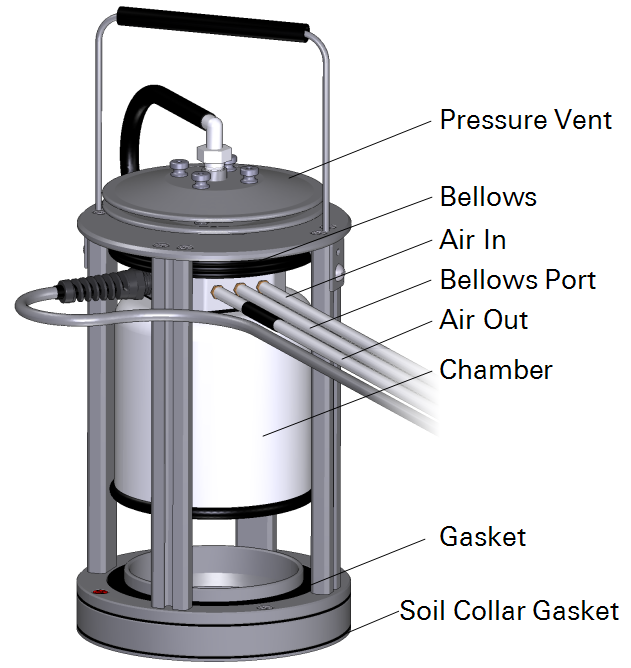
The chamber itself is raised and lowered with a bellows, which gently lowers the chamber over the soil collar. The small 10 cm chamber is ideal for locations that have many plant stems or rocks in the soil. The larger 20 cm chamber is compatible with soil collars used for long-term chambers.
Each chamber seals over the soil collar with a thin gasket, and the chamber volume seals with its own gasket when it closes. This minimizes leaks and wind effects. Each chamber has a pressure vent to maintain ambient pressure under windy conditions (Xu, et al., 2006).
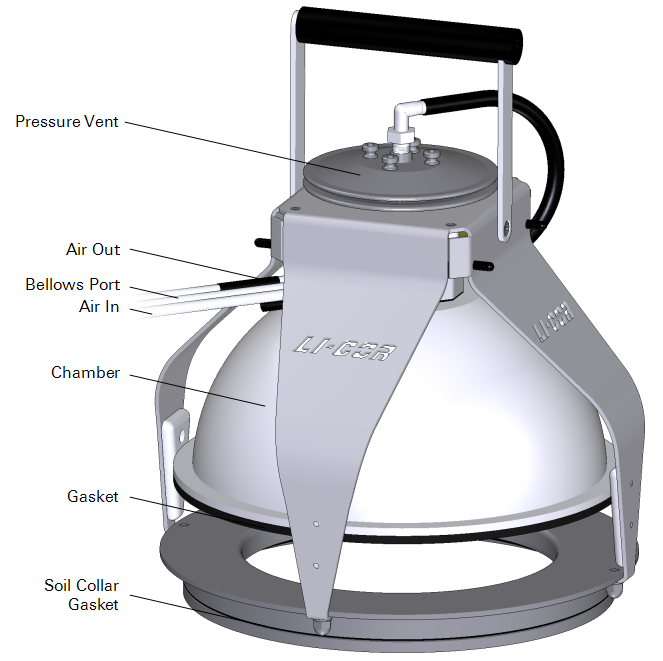
The bellows flow path
Survey chambers are raised and lowered with a pneumatic bellows system. A diaphragm pump provides air flow to a series of valves controlled by a pressure transducer. Air fills the bellows and drives the chamber closed; a vacuum raises the chamber.
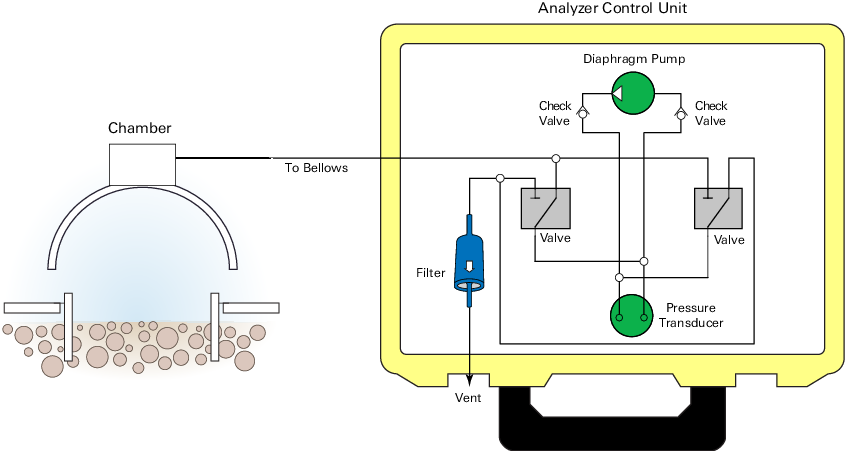
Connecting a survey chamber
The survey chambers have three tubes: AIR OUT is to the chamber, AIR IN is returning from the chamber, and BELLOWS is air that drives the bellows.
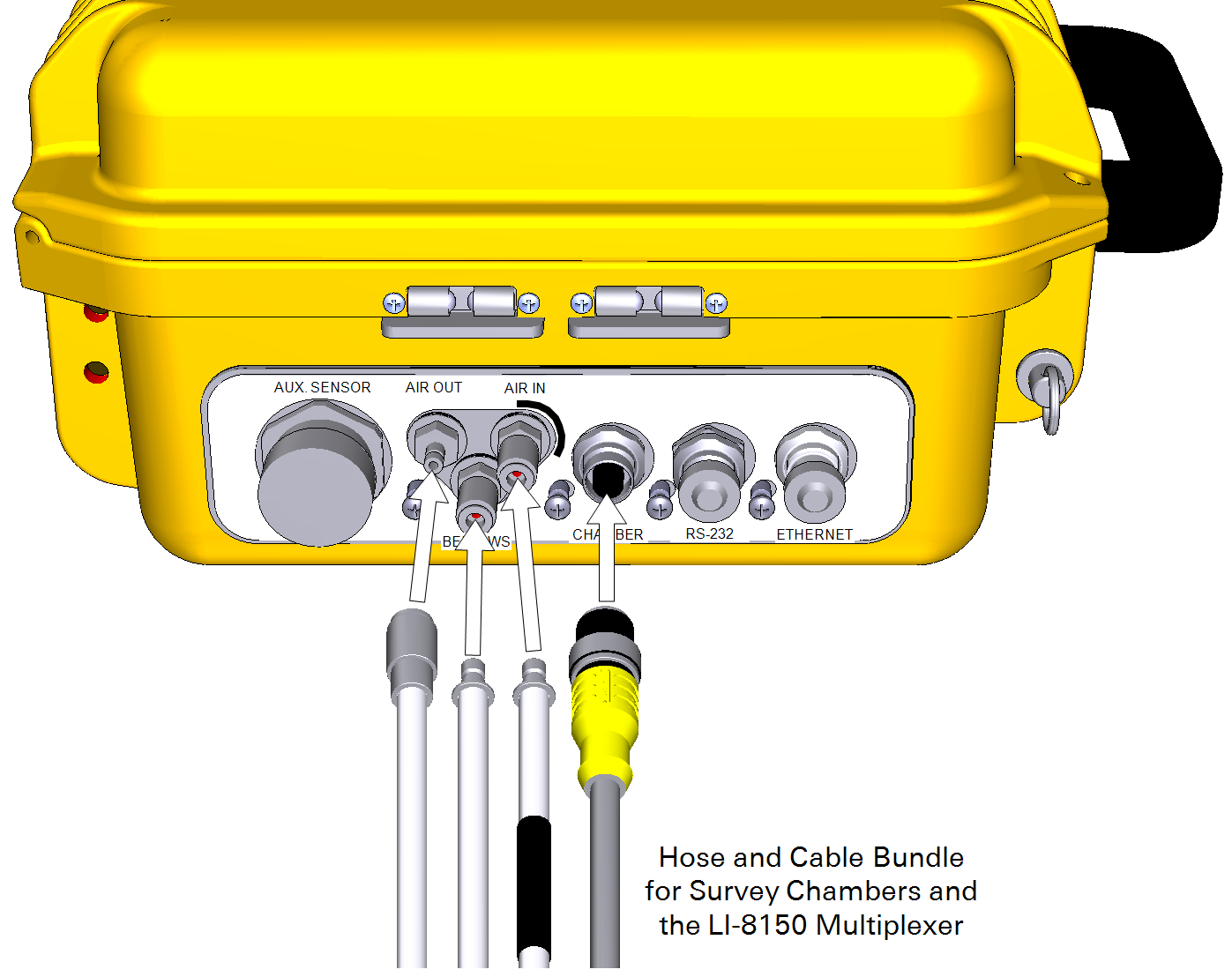
Notes on chamber connections:
- The cable fittings have fine threads. Make sure there is no debris on the fittings before attaching the connectors, as the threads can be easily damaged.
- Inspect the pins in the cable connector to be sure that none of them are bent. Straighten any bent pins before connecting the cable.
- Cover the connectors with the attached connector dust caps whenever the connectors are not being used.
- If you swap between survey and long-term chambers connected to the Analyzer Control Unit you must power the instrument off and then back on, as the type of chamber attached to the Analyzer Control Unit is recognized during system startup.
